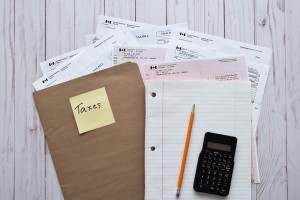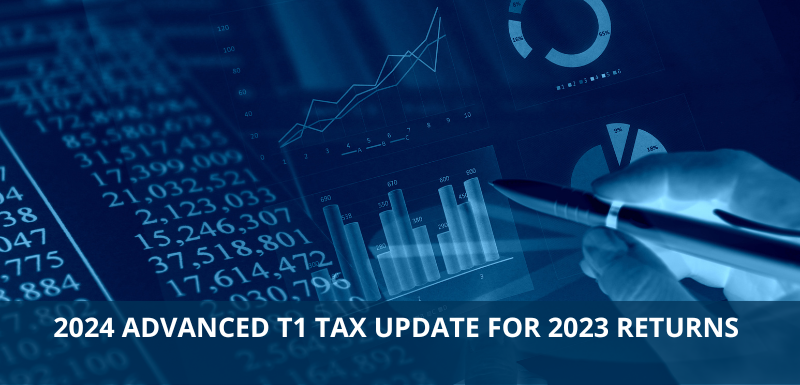Last updated: February 15 2024
Paper Returns: When Preferred, When Required

Evelyn Jacks
Processing a tax return will begin on February 19 and that’s also the date any paper tax return packages will be mailed. If you want to receive your return, refunds and Notice of Assessment faster, electronic filing is the way to go – and about 93% of Canadians chose that option last year. Aside from accessing the tax forms and line-by-line instructions immediately, CRA promises that processing an electronically filed return will take about two weeks, as opposed to 8 weeks for paper returns, according to CRA’s service standard. But in more than a dozen instances, paper filing is actually required. Check it out here:
How were tax returns filed last year? From February 6, 2023 to January 14, 2024, just over 32 million tax returns were filed with over 19 million or just under 60% of al returns in Canada were filed electronically by EFILE – a service that was paid to do so. Next most popular (10.4 million returns) is the self-prepared net file option. Paper returns however, were used in 2.5 million cases or 7.7%.
When must a paper return be filed? To begin, for tax returns prior to 2017, EFILE is not available. In addition, ReFILE services used to amend a return cannot be used for returns prior to  2019.
2019.
There are 16 other tax filing profiles in which paper filing is required by the CRA:
- The resident Canadian taxpayer is reporting any of the following:
a. Canadian source income from Lloyds of London.
b. Employment income earned from an International Organization.
c. Lump-sum pension income accrued to December 31, 1971.
d. More than 12 Selected Financial Data (SFD) records.
e. Ontario, Saskatchewan, British Columbia or Yukon qualifying environmental (mining reclamation) trust tax credit.
f. Form T1198, Statement of Qualifying Retroactive Lump-Sum Payment.
g. More than 80 field codes present in the free format area of SFD types 01 to 08. - The taxpayer is claiming any of the following:
a. Less than the maximum federal foreign tax credit.
b. Business income tax paid to more than 3 foreign countries.
c. Non-business income tax paid to more than 3 foreign countries.
d. Deduction for scientific research and experimental development expenses.
e. Form T89, Alberta Stock Savings Plan Tax Credit.
f. Nova Scotia research and development tax credit recapture. - The taxpayer is reporting farming income with the AgriStability and AgriInvest programs which involves any of the following:
a. Farming income from a partnership reported on a T5013 slip.
b. Farming income from a partnership that includes a corporate partner.
c. Status Indian reporting tax-exempt self-employed income.
d. SFD type 06 that has exceeded the maximum occurrences for the following fields:
i. 29 occurrences of “Commodity sales and program payments” at field 9950.
ii. 29 occurrences of “Commodity purchases and repayment of program benefits” at field 9960.
e. SFD type 09 that has exceeded the maximum occurrences in the following sections:
i. 50 occurrences for “Crop inventory valuation and productive capacity”.
ii. 50 occurrences for “Livestock inventory valuation”.
iii. 8 occurrences for “Purchased inputs”.
iv. 19 occurrences for “Livestock productive capacity”.
v. 8 occurrences for “Deferred income and receivables”.
vi. 8 occurrences for “Accounts payable”. - Deemed residents who are not subject to provincial or territorial tax.
- Emigrants from Canada
- Executors who file final returns must use the paper filing process when the taxpayer’s year of death is anything other than the current tax year.
- Early filed and elective returns for deceased taxpayers must also be filed on paper.
- Taxpayers with social insurance numbers (SIN) that begin with a zero, unless the taxpayer is a newcomer to Canada with a SIN starting with zero.
- Taxpayers who are bankrupt according to the Canada Revenue Agency’s records. According to the CRA only pre-bankruptcy returns that are not early filed are accepted through EFILE. The T1 return for the year immediately prior to the year of bankruptcy must be filed by the trustee in bankruptcy (if not previously filed by the taxpayer) on paper. The in-bankruptcy and post-bankruptcy returns must be filed on paper as well.
- In general, non-residents of Canada
- Foreign workers employed in Canada under the Seasonal Agricultural Workers Program who are non-residents or deemed non-residents.
- Seniors who are non-residents and filing Form T1136, Old Age Security Return of Income.
- Taxpayers who are non-residents but are filing the following forms and returns:
a. Schedule A, Statement of World Income - Non-Residents of Canada.
b. Schedule B, Allowable Amount of Non-Refundable Tax Credits - Non-Resident of Canada.
c. Schedule C, Electing Under Section 217 of the Income Tax Act - Non-Resident of Canada.
d. Section 116 – Disposition of taxable Canadian property by non-residents of Canada.
e. Form T1159, Income Tax Return for Electing Under Section 216. - Non-residents reporting income from the following information slips:
i. NR4, Statement of amounts paid or credited to non-residents of Canada.
ii. T4A-NR, Statement of Fees, Commissions or Other Amounts Paid to Non-Residents for Services Rendered in Canada.
iii. NR-OAS, Statement of Old Age Security Pension Paid or Credited to Non-Residents of Canada. - The taxpayer is electing to defer tax on a distribution of spin off shares by foreign corporations.
- The taxpayer is filing Form RC199, Voluntary Disclosures Program (VDP), Taxpayer Agreement, or the taxpayer is making a request to the VDP.
Make a Difference. Check out the filing deadlines for reporting these various forms; they can vary.
